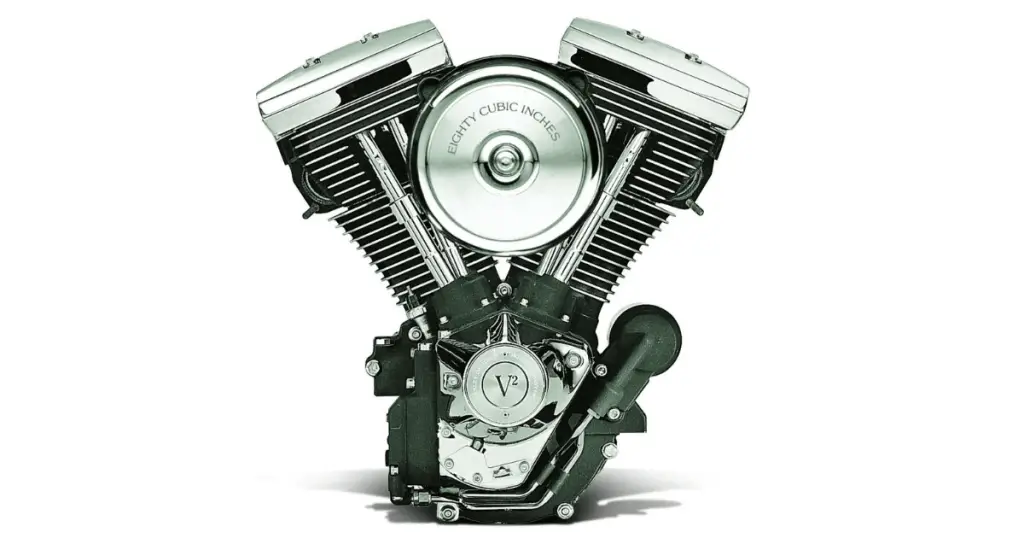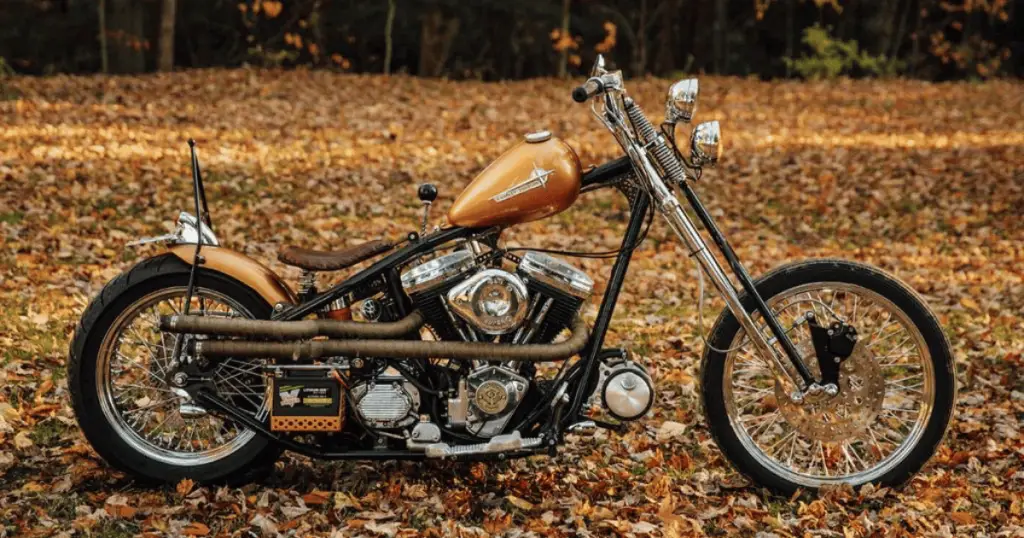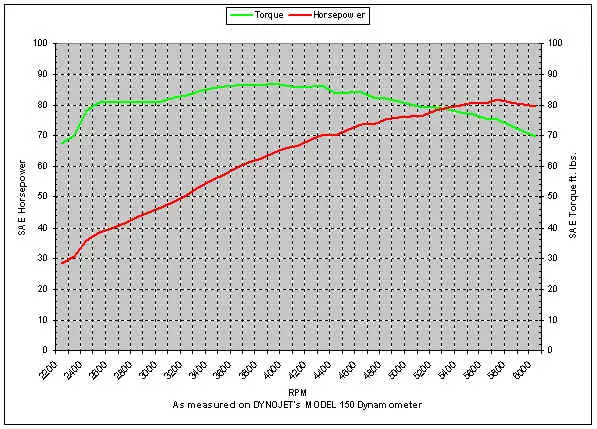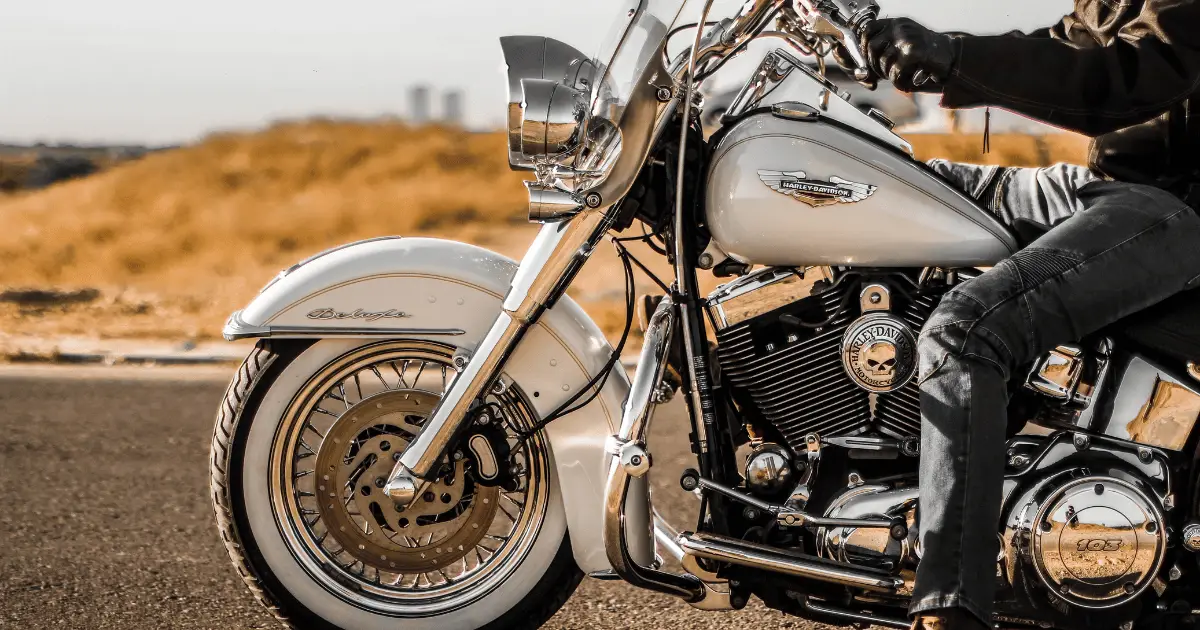Last Updated on January 12, 2024 by Pittalks
You’re about to ride through the heart of a motorcycling legend! Imagine the roar of the Harley EVO Motor, an emblem of both reliability and style that has been the heartbeat of Harley Davidson’s most revered machines. The EVO, short for Evolution, isn’t just any engine—it’s a V-twin powerhouse that ruled the roads from 1984 to 1999. Beyond its raw power and performance, builders cherished its durable construction and welcomed the vast potential for customization. While its prime shone brightest from 1991 to 1999 due to significant enhancements, even today, the purr of an EVO motor—found in icons like the Sportster 1200, Softail Custom, and Fat Boy—commands the attention of enthusiasts and promises a ride steeped in history, mechanical integrity, and that unmistakable Harley Davidson charisma.
The EVO Engine’s Emergence

The introduction of the Evolution engine in 1984
You might recall 1984 as a year of big hair and bold music, but for motorcycle enthusiasts, it marked the debut of something legendary: the Evolution engine, or EVO, as it’s affectionately known. You grinned the first time you kicked it to life, right? It was Harley-Davidson making a clear statement that they were ready to innovate, leaving no room for complacency in their pursuit of engineering excellence.
The technological shift in v-twin engines
If you’re a tech buff, the EVO’s entry was akin to the moment your favorite gadget got a major upgrade. This was the age where v-twin engines were set to evolve. No pun intended, but with the EVO, that’s precisely what you got – a revamped powerplant that promised fewer oil leaks, less maintenance, and better overall performance. It was a game-changer, making that roaring ride not just about style but also substance.
Replacing the Shovelhead: A new era for Harley Davidson
Remember the long-standing Shovelhead? It was tough to say goodbye, but when the EVO strutted onto the scene, it was clear this was the dawn of a new era for Harley Davidson. They drew a line in the sands of time, and you were either onboard or you weren’t. But seriously, who could resist the allure of better consistency and a less oil-spattered garage floor? It was out with the old and in with the smooth reliability of the EVO.
But, how did it do in the future? Harley’s Twin Cam vs Evo: Who’s Really The King Here?
The Golden Years of EVO Motors

Considered the best years: 1991-1999
Fast forward to the early ’90s: You’d think the EVO was already top-notch, but Harley wasn’t done yet. The years from 1991 to 1999 are often hailed as the golden era of the EVO motor. It’s like when your favorite TV show hits its peak – you just know it’s all running on all cylinders, quite literally in this case.
Improvements and refinements during this period
Throughout that golden period, the EVO saw tweaks and tunings that you probably picked up on if you’re the observant type. Each tweak to the motor was a step closer to mechanical nirvana, refining the blend of power, reliability, and that unmistakable Harley growl just for you.
Popular models featuring the EVO motor
It was during this time that some of the most iconic models boasting an EVO motor rolled onto the streets. Think about the Sportster 1200 or the Softail Custom, and, oh, the Fat Boy – each one a testament to the golden era’s success with an engine that promised to turn heads and ignite dreams.
Design and Performance

The technical specifications of the EVO motor
Now, let’s nerd out for a second. Technically speaking, the EVO motor packed a punch with its overhead-valve, air-cooled setup, and a displacement that would have any enthusiast nodding with respect. Its bulletproof design encapsulated the perfect marriage of form and function that was as aesthetically pleasing as it was performance-driven.
Performance benchmarks and capabilities
In terms of performance, the EVO was no slouch. Sure, it wasn’t the beast that today’s engines are, but back in the day, it hit benchmarks that made rival manufacturers sit up and double-check their spec sheets. Those torque and horsepower numbers were more than just figures – they were street-cred-building, horizon-chasing calls to the open road.
Comparing the EVO to its predecessors and successors
Put the EVO side by side with its predecessors, and you’d see a chasm of improvements. Compare it to its successors, though, and you start to understand why the EVO is so celebrated – it established a benchmark that Harley’s later models would continuously hearken back to. It’s like that old record you love – it may not have the crispness of digital, but its warmth is unforgettable.
And, you have to ask: What were the Evo years to avoid?
EVO’s Reliability and Durability
Engineering factors contributing to its dependability
You’ve heard the tales – the EVO is as reliable as they come. It’s like that friend who’s always there for you. Engineering-wise, the EVO’s robust build and refined internals contributed to an overall package that whispered dependability. No more crossing fingers on a long trip – the EVO had your back.
Longevity of the EVO engine in Harley Davidson motorcycles
If you’re into anecdotes, you’ve probably swapped stories of EVO motors chugging along happily with mileage numbers that would intimidate newer machines. It’s not a fluke; the EVO’s longevity is storied and much revered, making it a favorite among Harley loyalists and new riders alike.
Maintenance: Addressing issues like oil leaks and camshaft wear
Sure, you’d hear about some oil leaks and camshaft wear, but with proper maintenance, these were mere blips on the radar. Addressing these issues was all part of the experience – a rite of passage, if you will, in the EVO’s otherwise sterling reputation.
Customization and Aftermarket
EVO motor’s customization potential
You want to talk about personalization? The EVO motor was a blank canvas. The customization potential was near limitless, igniting the creativity of riders who wanted their bikes to reflect their unique styles. From mild to wild, the EVO could be tweaked to your heart’s content.
Popularity in the aftermarket scene
Once the EVO hit its stride, the aftermarket scene latched on with gusto. You could find parts and mods to jazz up performance or aesthetics. This wasn’t just about keeping your ride purring; it was about making it roar in a way that matched your personality.
Examples of customized EVOs
Some of the customized EVOs you’ve seen are the stuff of legend. With performance kits and aesthetic enhancements ranging from the sublime to the outrageous, EVO owners have proven just how versatile this engine can be – like that one bike you saw, remember? The one that had you doing a double-take as it gleamed under the sun?
Iconic EVO Models
The Sportster 1200 and its legacy
The Sportster 1200, with the EVO at its heart, became synonymous with a blend of raw power and agility. Its legacy stands as a testament to how the engine shaped an entire model to become a cult classic. Riding one felt like stepping into a piece of history that was alive and well, eager to write new chapters with you at the helm.
Softail Custom: Blending style and performance
Step over to the Softail Custom, and you saw the EVO shining through with a style that was pure Americana. It wasn’t just the looks – the performance of the EVO ensured that the Softail Custom was not all show and no go. It was a ride that promised – and delivered – bliss.
The Fat Boy: A symbol of the EVO’s success
Then there’s the Fat Boy. You know the one – it graced the silver screen and rode into the collective consciousness as a hulking symbol of cool. Behind the scenes, though? The success of the Fat Boy was, in no small part, thanks to the EVO motor that propelled it beyond mere infamy into iconic status.
Troubleshooting EVO Common Issues
Overcoming oil leak challenges
Ah, oil leaks – the bane of any EVO owner’s existence, at least until they figured out how to overcome them. Like finding the source of a pesky draft in your home, once diagnosed, these leaks could often be remedied with a bit of know-how and elbow grease.
Addressing camshaft wear and replacements
Camshaft wear was another quirk to contend with, but don’t fret. With proper care and timely replacements, it was an issue that could be navigated with relative ease. Consider it an opportunity to get intimate with the inner workings of your beloved EVO.
Ensuring optimal performance through regular maintenance
Regular maintenance was your ticket to ensuring optimal performance. Treat it right, and the EVO would reward you with a hearty rumble and relentless loyalty on the road. Like any long-term relationship, it was all about the attention you put in to keep it thriving.
The Single Cam Advantage
Avoidance of Twin Cam complications
Ever heard those Twin Cam complication stories? You nodded appreciatively, knowing your EVO circumvented all that with its single cam design. It was simpler, more efficient, and spared you the headache of dealing with potential issues that often came hand-in-hand with more complex setups.
Benefits of the EVO’s single cam design
The EVO’s single cam design meant not only fewer things could go wrong but also a smoother ride. That’s the benefit of keeping it straightforward – your bike sang a tune of reliability that others strived to match.
Impact on the engine’s longevity
And longevity? That single cam contributed hugely to the lifespan of your EVO. Turn after turn, mile upon mile, the robust build was evident in the purr of an engine that felt like it could go on forever. It was your trusty steed, never shying away from a challenge.
Buying Guide for EVO Motors
Choosing the right model from 1991 to 1999
So you’re in the market for one of these bad boys? Aim for models from 1991 to 1999 – the golden years, remember? Those are the models with all the upgrades, the tweaks, and fine-tuning that make the EVO such a prized possession.
Inspecting a secondhand EVO motor
Inspecting a secondhand EVO motor requires a keen eye. You’d check for signs of proper maintenance, dig into its history, and listen to its idle with the same discernment as a sommelier sampling a fine wine. You want a motor that’s been loved, not abused.
Key factors to ensure best performance and reliability
Key factors include checking compression, inspecting for oil leaks, and ensuring there’s no undue noise coming from the cam area. These checks help secure the performance and reliability that the EVO is known for.
Maintaining the Legend
Recommended routine maintenance for EVO motors
Routine maintenance? Think of it as the daily workout regimen for your EVO. Regular oil changes, valve adjustments, and keeping an eye on the cam tensioner go a long way in keeping the legend roaring.
Preservation tips from seasoned mechanics
Then there are the pearls of wisdom from seasoned mechanics: never skimp on quality replacement parts, and make friends with your local expert. The EVO might be rugged, but it deserves tender loving care.
Resources and communities for EVO enthusiasts
Lastly, you’re not alone in this. The wealth of resources and communities for EVO enthusiasts is staggering. From forums to clubs, there’s a camaraderie in the owners of these machines that’s as enduring as the engines themselves. Sharing tips, swapping stories, or showing off your ride – it’s all part of the EVO experience.
So there you have it – a comprehensive dive into the engine that redefined an era for Harley-Davidson. It’s a legacy built on power, reliability, and style, and you, my friend, are part of that storied tradition. The EVO motor isn’t just a piece of machinery; it’s a heart, beating with the pulse of a brand that has become synonymous with the open road. Keep it thumping.


